One fascinating gesture Cockatiels often make is creating heart wings. This adorable display leaves many bird owners curious about its meaning. If you want to know ‘cockatiel heart wings – what does it mean, here’s your answer.
Cockatiels typically make heart wings when they are at ease and in a positive emotional state. It is often seen during moments of comfort, such as when they are receiving gentle petting, being hand-fed, or enjoying a pleasant interaction with their owner.
Heart wings can also be observed when cockatiels are resting or feeling remarkably relaxed.
Let’s explore the various reasons why your cockatiel may be making heart wings. We will also discuss whether it is a positive or negative behavior, and how you can encourage your cockatiel to create heart wings.
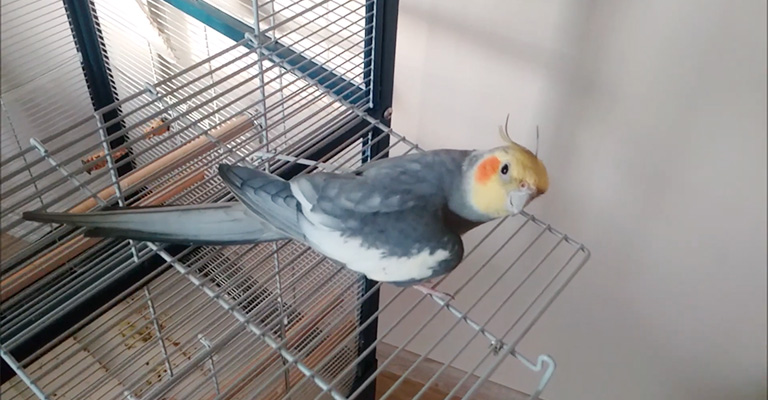
Why Is My Cockatiel Making Heart Wings?
If your cockatiel is exhibiting a behavior known as “heart wings,” it usually means that they are feeling content, relaxed, and secure in their environment. Heart wings refer to a cockatiel’s posture where they hold their wings slightly away from their body, forming a heart shape.
Here are the details-
Affection and Bonding
One common reason why cockatiels make heart wings is to express affection and bond with their owners. When your cockatiel stretches its wings out and brings them together in a heart shape, it is a sign of love and trust. It’s their way of saying, “I feel safe and happy with you.”
Courtship and Mating Behavior
Heart wings can also be seen during courtship displays. Male cockatiels often create heart wings as part of their courtship ritual to attract a potential mate. This behavior is usually accompanied by singing and other displays, indicating their readiness to reproduce.
Excitement and Happiness
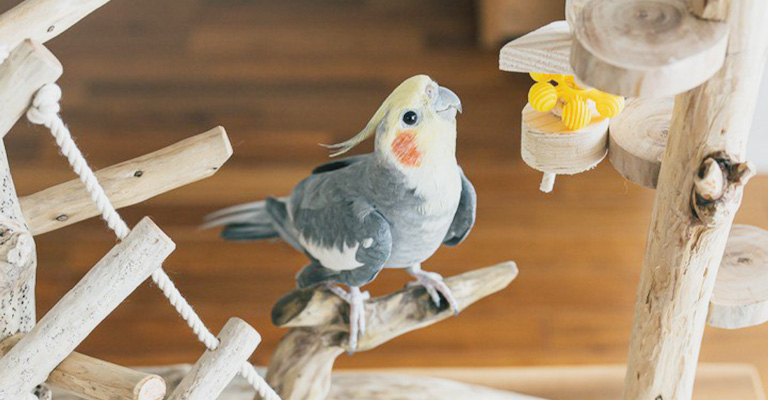
Cockatiels are known for their playful and energetic nature. When they feel excited or happy, they may spontaneously create heart wings as a way of expressing their joy. It’s like a visual celebration, demonstrating their contentment and enthusiasm.
Attention-seeking
Some cockatiels have learned that making heart wings catches the attention of their owners. If your bird realizes that this behavior elicits a positive response or reward, it may start doing it more frequently to seek attention or treats.
Mimicking Human Behavior
Cockatiels are intelligent birds and are capable of imitating various actions and gestures they observe. If your cockatiel sees you or others making heart shapes with their hands, it may try to mimic the same motion with its wings, imitating human behavior.
Display of Dominance
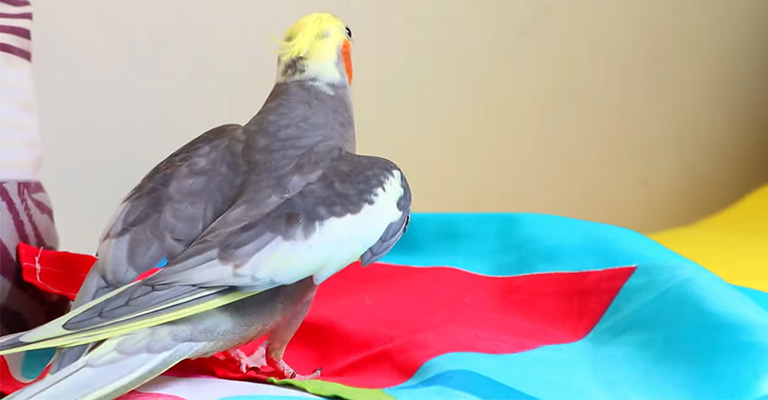
In rare cases, heart wings can be a display of dominance. Cockatiels are social animals and establish hierarchies within their flock. If your cockatiel is showing dominant behavior, it may create heart wings as a way of asserting its position.
Stress or Anxiety
While heart wings are generally considered positive, there are instances where cockatiels may display them due to stress or anxiety. If your bird is feeling overwhelmed or frightened, it may create heart wings as a way of self-soothing or seeking reassurance.
Health Issues
In some cases, abnormal wing postures, including heart wings, may be an indication of underlying health problems. If your cockatiel consistently displays heart wings or exhibits other abnormal behaviors, it’s essential to consult an avian veterinarian to rule out any medical issues.
Is Cockatiel Making Heart Wings Good or Bad?
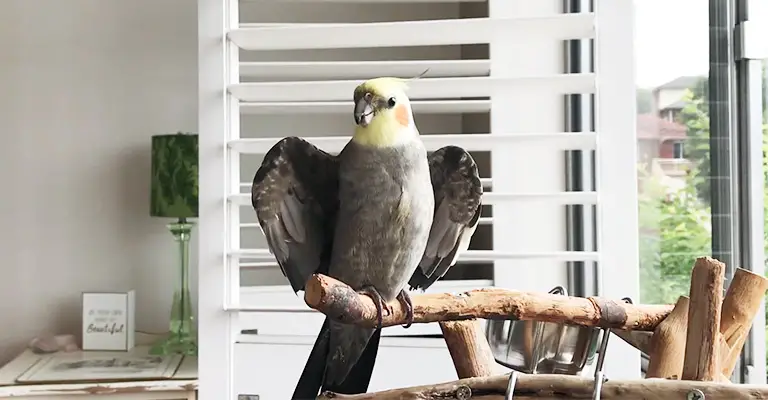
Heart wings in cockatiels are generally considered positive and endearing. It signifies a strong bond between the bird and its owner, as well as happiness, excitement, and playfulness.
However, if your cockatiel shows signs of stress or anxiety while making heart wings, it’s crucial to assess its environment and address any potential triggers causing discomfort.
In this case, you can follow these measures-
Create a Calm Environment
Ensure your cockatiel’s cage is located in a quiet area of your home, away from excessive noise or commotion. A peaceful environment will help alleviate any potential stressors and promote a sense of security for your bird.
Spend Quality Time
Engage in regular interaction and bonding sessions with your cockatiel. Spend time talking to it, offering treats, and gently stroking its feathers. This will strengthen the bond between you and provide a sense of security for your bird.
Offer Enrichment Activities
Provide your cockatiel with a variety of toys, perches, and foraging opportunities. These activities will keep your bird mentally stimulated, reducing the likelihood of stress-related behaviors.
Ensure a Balanced Diet
A proper diet is crucial for your cockatiel’s overall well-being. Provide a nutritionally balanced diet that includes a variety of fresh fruits, vegetables, seeds, and pellets. Consult with an avian veterinarian for specific dietary recommendations.
Regular Veterinary Check-ups
Schedule regular check-ups with an avian veterinarian to monitor your cockatiel’s health. Early detection of any underlying medical conditions can prevent potential problems and ensure your bird’s well-being.
Positive Reinforcement
When your cockatiel creates heart wings, offer positive reinforcement by providing verbal praise or a small treat. This will reinforce the behavior and strengthen the bond between you and your bird.
How to Make a Cockatiel Create Heart Wings?
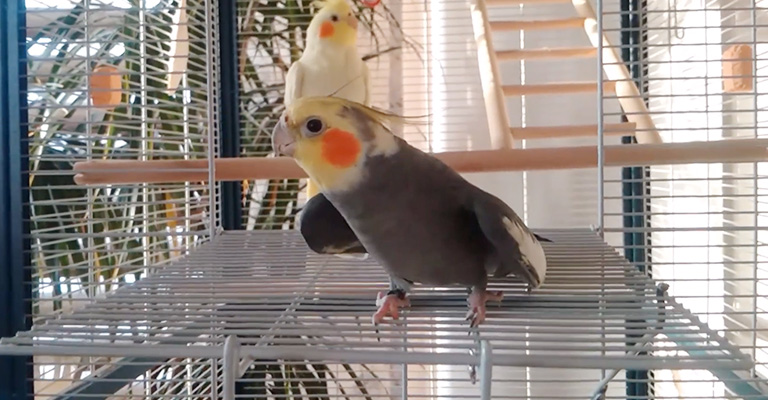
Who doesn’t want to see their pet birds passionately spreading their wings? Here are some ways to make your bird create heart wings-
Show Affection
Express your love and care for your cockatiel by gently petting its head and body. This affectionate touch can encourage your bird to feel safe and secure, increasing the likelihood of heart wings.
Play Soft Music
Cockatiels are known to respond positively to soft and soothing music. Playing calming tunes in the background may help create a relaxing atmosphere, encouraging your bird to engage in heart wing displays.
Offer a Mirror
As you might know, cockatiels are naturally attracted to their reflection. Providing a small mirror in their cage can stimulate their curiosity and encourage interactive behaviors, including heart wings.
Training and Socialization
Another effective way is to train your cockatiel to perform specific behaviors, such as stepping onto your hand. It can strengthen the bond between you and your bird. Through positive reinforcement training, you can encourage your cockatiel to create heart wings on command.
Mimic the Behavior
If you gently mimic the heart wing gesture using your hands, your cockatiel may observe and imitate the behavior. Gradually, it may start replicating the motion with its wings, resulting in heart wing displays.
FAQs
While occasional heart wings are normal, constant displays could indicate stress or health issues. Monitor your bird closely and consult a veterinarian if concerned.
Yes, both male and female cockatiels can create heart wings. It’s a behavior commonly observed in both genders.
Training timelines can vary depending on the bird’s personality and willingness to learn. Patience and consistent positive reinforcement are key.
It’s common for cockatiels to display heart wings primarily when their trusted owners are present. It’s a sign of their bond and affection for you.
Changes in behavior can occur due to various factors. If your cockatiel’s overall health and behavior are normal, it might just be going through a temporary phase.
Final Words
So, that was all about cockatiel heart wings – what does it mean? Cockatiels create heart wings for various reasons, such as to express affection, courtship, happiness, or to seek attention.
This endearing behavior is generally a positive sign of a strong bond between the bird and its owner. However, monitoring your cockatiel’s behavior for signs of stress or anxiety is important, as providing a supportive environment to ensure its well-being.
By understanding the reasons behind heart wings and implementing the suggested solutions, you can enhance your relationship with your cockatiel and create a happy and fulfilling environment for your feathered companion.